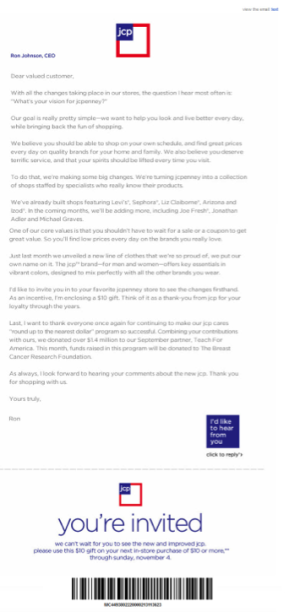3 New Ways To Measure Email Campaign Effectiveness
Almost 70% of all messages in people’s inboxes are non-personal, meaning they are marketing offers, social updates, receipts and more. This is both good news and bad news for marketers. The good news is the inbox is now more of a marketing channel than ever before. The bad news is there is more competition, and […]
Almost 70% of all messages in people’s inboxes are non-personal, meaning they are marketing offers, social updates, receipts and more. This is both good news and bad news for marketers.
The good news is the inbox is now more of a marketing channel than ever before. The bad news is there is more competition, and marketers need to work extra hard to stand out.
Luckily, measuring email campaign performance is moving beyond opens and clicks. New measurements are available that can tell you not only how your campaigns are faring but also what’s working for your competitors.
Email Forwards
When I talk about email forwards here, I mean when a subscriber literally opens the email and hits the “forward” button in the email message to send it off to a friend or family member. I do not mean the ability to forward or share through a Web form or through a social channel.
This forward measurement is not only a good indicator of interest from your subscribers, but also their friends and family. Not to mention those recipients are more likely to open the email since it’s being sent by someone they know.
You can use this metric to look at past performance of campaigns and, more importantly, you can look at the forward rate of your competitors and borrow their best tactics.
For example, during the Christmas season, Kohl’s and JCPenney sent campaigns at roughly the same time period.
Kohl’s subject line – “Take an Extra 20% Off Everything With Your Friends & Family Shopping Pass!” – presented a clear offer and gave a clear call to action.
Compare this with JCPenney’s bland subject line, “A Letter And Gift From Our CEO.” Even Kohl’s creative was much better, with the CTA above the fold offering a large discount. The JCPenney offer was all text and no images with the offer (a $10 gift) buried at the bottom of the email.


If, like me, you guessed that Kohl’s was forwarded more, you’d be wrong. The JCPenney email was forwarded over twice as much. Plain, direct and to the point won out over conventional best practices.
“This Is Not Spam” Rate
We’ve all had emails land in the spam folder; and once that happens, your open and conversion rates drop. At this point, you hope your subscribers actually go into their spam folders and mark the message as “not spam.” This is rarely the case, though.
A recent Coca-Cola MyPoints email campaign sent to the program’s entire list had less than 5% of the campaign delivered to spam folders. Ninety-three percent of those emails that landed in spam were marked as “not spam,” a remarkable feat for anyone.
In this case, Coca-Cola’s advantage was its strong, recognizable brand, which was used in both the subject line and the from address. Personalization and segmentation were also used, and clearly, the results paid off. The program’s successive campaigns, thanks to these high “not spam” rates, had inbox placement rates of 100% at Gmail.
Deleted Without Opening & Deleted After Opening
On the other end of the spectrum, knowing what people ignore or delete after reading can be just as useful. In the case of Coca-Cola, their most read campaigns were also their most ignored.
Subscribers read the MyPoints reminder campaigns more than other campaigns, but a high amount — almost a fifth of their list — deleted the emails after reading them. Email marketers can use this along with their conversion tracking to determine where creative isn’t performing.
Another Coca-Cola campaign for a sweepstakes had read rates that were similar to other campaigns, but 40% more subscribers deleted that campaign without ever opening it.
If we were only looking at read rates or open rates, we’d probably deem the campaign a success, or at the very least, acceptable. Looking at the rate of those that deleted it without ever opening it tells us that we need to further test our subject lines, further segment the list to appeal to the others who are active but just not interested, or both.
Beyond Opens & Clicks
These metrics move beyond the traditional opens-and-clicks and provide more insights into subscriber behavior. Testing is still a requirement, but now, you have more data to support faster, better decision making.
Contributing authors are invited to create content for MarTech and are chosen for their expertise and contribution to the search community. Our contributors work under the oversight of the editorial staff and contributions are checked for quality and relevance to our readers. MarTech is owned by Semrush. Contributor was not asked to make any direct or indirect mentions of Semrush. The opinions they express are their own.
Related stories
New on MarTech